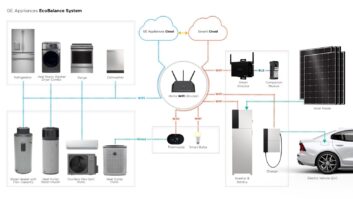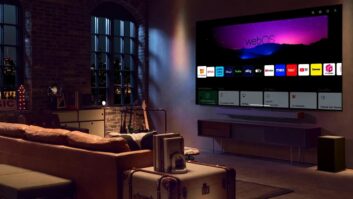In a previous column I made reference to the fact that each year in this country we sell or lease almost as many new vehicles as we do new televisions.
Doesn’t that seem strange? Most cars begin around $10,000 and cost a lot each year in terms of insurance, operation and maintenance, whereas the bulk of TVs, although many do cost $3,000 or more, generally run well under $1,000 and cost little or nothing thereafter.
With all that being the case, I should think the ratio of sales should be 5 or even 10 to 1 in favor of TVs instead of the approximate 1.2 or 1.3 to 1 ratio that it is.
We know some of the reasons why this is, but should we accept them as inevitable? No! I understand that cars wear out while most CE products seem to go on forever, but today’s new vehicles will certainly last longer than the current replacement cycle for most Americans. The point is, it’s no longer about replacement due to the car no longer functioning, it’s about consumers simply wanting something new.
If we assume sales of 15 million new vehicles annually, which these days would be considered a down year, and around 150 million U.S. households, we have, on average, a 10-year replacement cycle. This same calculation for TVs suggests a 7.5-year cycle, presuming that 20 million TVs are sold each year on average.
But what if the 7.5-year average was, say, 6.5 years? All of a sudden we get a 15-percent increase in sales, not to mention what should be a tremendous coattail effect for other A/V products, particularly if the increase comes in HDTV.
So the math looks good, but how do you make that happen? Consider why people elect to buy or not buy a new TV. For many, this occurs only when the old one quits working, which, as you know, could easily be 15 years or longer.
Coyote Insights’ recently completed home convergence study showed that consumers do not think about what might be new or better when watching their existing TV, not because they wouldn’t appreciate a better TV experience but rather because no one has suggested that they should. And telling them that they should buy a new TV because it has a “3D digital comb filter for maximum picture detail and resolution” is not the answer.
Reverting to the time honored market research technique of relying on one’s own experience to ponder how others may act, I considered my own TV buying habits.
The two homes I currently own collectively have 24 possible TV locations but only five actual sets (my college-bound son left home with the sixth).
I wouldn’t get too far down the road speculating about how many TVs could be sold each year if we could just get people like me to put one in, oh, say maybe half of the rooms where one could go.
That’s not going to happen. But you could increase what is sold by talking to consumers about why they might want to put a TV in one or two additional rooms. Reasons could include creating a different viewing experience based upon the room size or location, providing more viewing choices for all in the household, or as a courtesy for guests who might stay overnight. Most anything, in fact, would be better than “because the new TV has a 3D digital comb filter for maximum picture detail and resolution.”
The late Stanley Marcus (as in Neiman Marcus) once said, “I’ve never found a man who needs a necktie. But he may be fascinated with the color or the design and wants one.” He was right, and I for one have a shameful number of ties to prove it. But now its time to get millions of consumers like me to buy CE products because we want them rather than simply because we need them, and I am convinced it can be done to the benefit of all.













